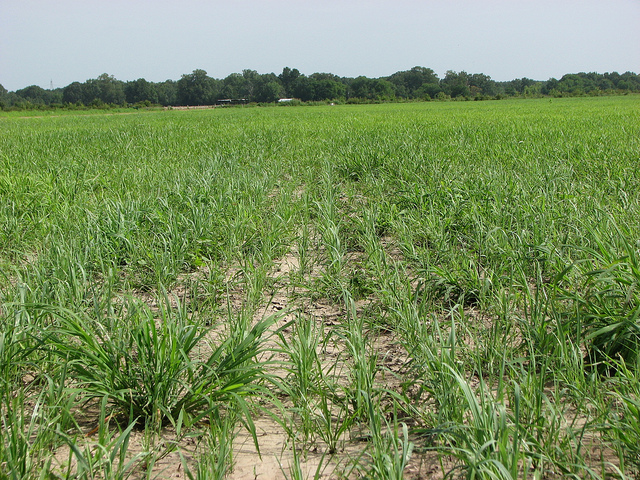
U.S. Department of Agriculture. Shared under Creative Commons licence. https://www.flickr.com/photos/usdagov/
Switchgrass, a cellulosic biofuel crop.
The U.S. Environmental Protection Agency’s move to change the definition for cellulosic biofuels has caused some controversy. According to Energy Global, the new rule essentially allows energy products that are 75 percent cellulosic to qualify as a 100 percent cellulosic biofuel.
By definition, biofuels are made from plant material. Cellulosic biofuels are made from fibrous parts of plants, like the leaves and the stems.
In 2007, President Bush signed the Energy Independence and Security Act, which, among other things, required the EPA to set the annual standards for the Renewable Fuel Standard program. The original RFS program required 7.5 billion gallons of renewable fuel to be blended into gasoline by 2012.
In 2012, a federal court ruled that they EPA couldn’t require refiners to use cellulosic biofuels that weren’t commercially available.
This year, the EPA released a final rule on RFS Pathways II, modifying the original definition of cellulosic biofuel to include energy products that didn’t qualify before. Under the new regulations, the following are considered cellulosic biofuels:
- Compressed natural gas produced from biogas from landfills, municipal wastewater treatment facility digesters, agricultural digesters, and separated MSW digesters
- Liquefied natural gas produced from biogas from landfills, municipal wastewater treatment facility digesters, agricultural digesters, and separated MSW digester
- Electricity used to power electric vehicles produced from biogas from landfills, municipal wastewater treatment facility digesters, agricultural digesters, and separated MSW digesters
According to the Institute for Energy Research, cellulosic biofuel production for this year up to July was 62,187 gallons, or 0.4 percent of the proposed 2014 requirement. After the rule change, production in August was 3,492,106 gallons, bringing the total up to 21 percent of the annual requirement.
IER concluded:
EPA is just re-categorizing an existing type of fuel as “cellulosic” in order to meet its proposed 2014 requirement. EPA should be basing the mandate on accurate numbers that are truly 100 percent cellulosic and not on exaggerated, bogus numbers that do not measure what actually is cellulosic.
Although current cellulosic biofuel isn’t enough to meet the annual EPA requirements, that doesn’t mean it’s completely nonexistent. As Jeremy Martin reported for National Geographic today, the Spanish company Abengoa is bringing online a cellulosic biofuel facility in Hugoton, Kansas.
This is the second big cellulosic biofuel plant to open in the U.S. this year. The other opened in Iowa in August as the result of a collaboration between U.S. ethanol company Poet and Royal-DSM from the Netherlands. Martin reported that these and other companies are investing in biofuels in Brazil and the U.S., and where they decide to continue to invest could depend on the country’s policy climate.
According to Martin:
I am less concerned about exactly what production volume target EPA sets for 2014 or 2015 than with how they reset the policy in the timeframe 2016 to 2022 and beyond. Establishing policy stability over the next 5 to 10 years is what will support the next round of investment.
What’s next:
- Read the EPA’s Regulatory Announcement.
- Learn more about the Energy Independence and Security Act of 2007 from the U.S. Department of Energy.
- Learn more about the Renewable Fuel Standard.








